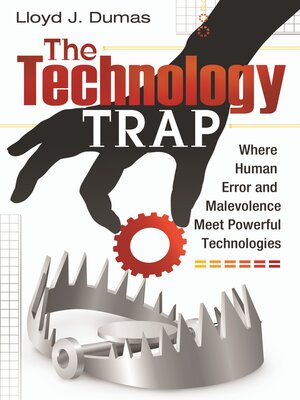The Technology Trap
ebook ∣ Where Human Error and Malevolence Meet Powerful Technologies
By Lloyd J. Dumas

Sign up to save your library
With an OverDrive account, you can save your favorite libraries for at-a-glance information about availability. Find out more about OverDrive accounts.
Find this title in Libby, the library reading app by OverDrive.



Search for a digital library with this title
Title found at these libraries:
| Library Name | Distance |
|---|---|
| Loading... |
In this eye-opening book, author Lloyd J. Dumas argues that our capacity for developing ever more powerful technologies and the unavoidable fallibility of both machine and man will lead us towards a disaster of an unprecedented scale.
Most of us assume that those in charge can always find a way to control any technology mankind creates, no matter how powerful. But in a world of imperfect human beings who are prone to error, emotion, and sometimes to malevolent behavior, this could be an arrogant—and disastrous—assumption.
This book is filled with compelling, factual stories that illustrate how easy it is for situations to go terribly wrong, despite our best efforts to prevent any issue. The author is not advocating an anti-technology "return to nature," nor intending to highlight the marvels of our high-tech world. Instead, the objective is to reveal the potential for disaster that surrounds us in our modern world, elucidate how we arrived at this predicament, explain the nature and ubiquity of human fallibility, expose why proposed "solutions" to these Achilles heels cannot work, and suggest alternatives that could thwart human-induced technological disasters.
Most of us assume that those in charge can always find a way to control any technology mankind creates, no matter how powerful. But in a world of imperfect human beings who are prone to error, emotion, and sometimes to malevolent behavior, this could be an arrogant—and disastrous—assumption.
This book is filled with compelling, factual stories that illustrate how easy it is for situations to go terribly wrong, despite our best efforts to prevent any issue. The author is not advocating an anti-technology "return to nature," nor intending to highlight the marvels of our high-tech world. Instead, the objective is to reveal the potential for disaster that surrounds us in our modern world, elucidate how we arrived at this predicament, explain the nature and ubiquity of human fallibility, expose why proposed "solutions" to these Achilles heels cannot work, and suggest alternatives that could thwart human-induced technological disasters.







